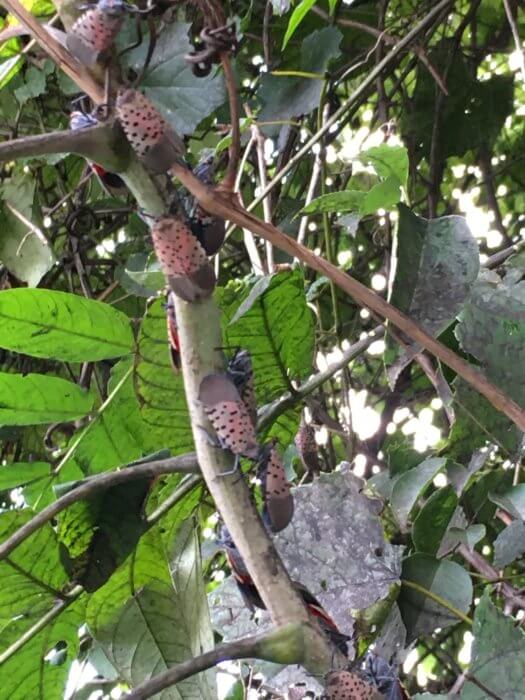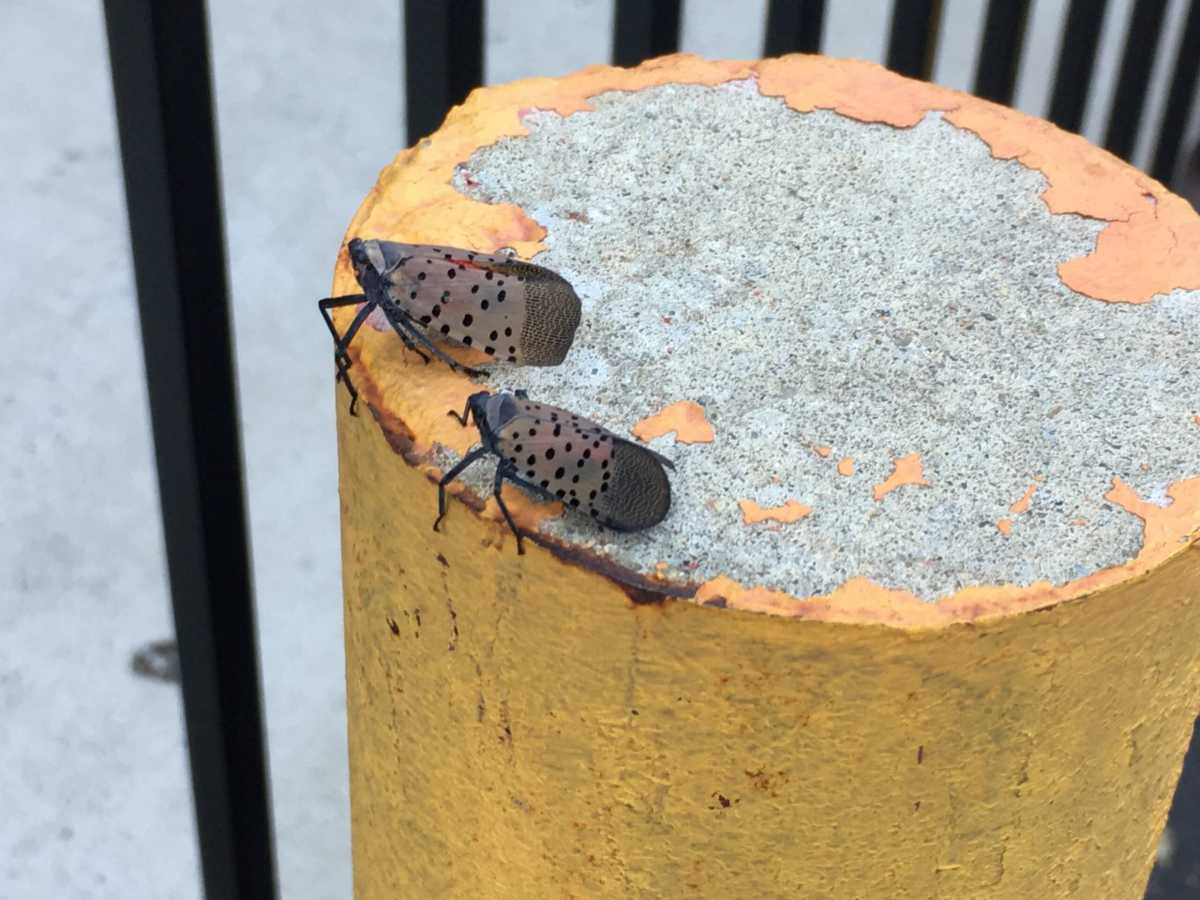There’s more than one outbreak in Philadelphia.
Residents have noted an increase in the number of spotted lanternfly, the invasive insect that causes harm to trees and some crops. The infestation has become more pronounced in recent weeks, as the flies have grown into fully-formed 1-inch adults.
Experts seem to agree that the lanternfly population has probably spiked compared to last year, though, as of yet, there is no concrete way of measuring the jump.
The Pennsylvania Department of Agriculture runs a website where people can document sightings, and reports are up 500% compared to last year.
However, a number of factors could be behind the massive increase, including people spending more time at home and having more time on their hands during the COVID-19 pandemic, said Jay Losiewicz, of the department’s Spotted Lanternfly Program.
In addition, in a change from last year, the state is now asking respondents to report how many lanternflies they have spotted.
Researchers from the Penn State Extension, one of the leading groups working on lanternfly management, have been conducting a study to develop a formula to manage population density, but those results have not yet been compiled.
“The general consensus is that it does seem like there are more this year, but it’s going to be a little while before we can actually answer that question,” Losiewicz said.
Philadelphians generally have responded by stepping on and swatting the flies. Social media users boast of their kills and share methods for creating traps and sprays.
Cheltenham Township Commissioner Ann L. Rappoport told Metro she has noticed a surge in her suburban community. In an op-ed in Sunday’s Inquirer, she said killing the bugs is “a civic duty” that leaves her feeling empowered during the pandemic.
Emelie Swackhamer, an educator based at Penn State Extension’s Montgomery County office, said that a few theories are flying around about the apparent spike in the lanternfly population, though none have been thoroughly substantiated.
It may just be that they are showing up in new areas and expanding. Lanternflies tend to move around a lot, looking for healthy trees with good sap that haven’t been touched by other lanternflies, she said.
State officials earlier this year extended a lanternfly quarantine to 12 additional counties after the bugs were spotted as far away as the Pittsburgh area.
Swackhamer said 2018, a particularly rainy year, could have pushed down the population because a lot of lanternflies died of infections from fungi, which thrive in wet conditions. It didn’t rain as much last fall, when lanternflies lay their eggs.
This past winter was also mild, which may have allowed more eggs to survive, she added.
Lanternfly thrive in the area, even in Center City, and they might even prefer urban environments, Losiewicz said.
The bugs like tall structures, like telephone poles and buildings. They’re not great flyers, but they won’t hesitate to climb to the top of a building and use their wings to glide to a place with their preferred trees and plants, he said.
Philadelphia has plenty of parks, street trees and even back alleys where plant life is hidden. Lanternflies particularly like to feed on tree-of-heaven, another invasive species from Asia that is common in the region, but they will eat a wide variety of plants.
“If they were going to come to the United States, Pennsylvania would be the perfect place for them to come live because our climate is identical to China in many regards,” Losiewicz said. “They are very happy here.”

Lanternflies arrived in the U.S. six years ago, when they were reported in Berks County. They were spotted in large numbers in Philadelphia for the first time last year.
State officials have been working to contain the lanternfly, which can destroy fruit-bearing crops.
Vineyards and orchards have been hit particularly hard. Some grape growers in Berks County have lost 90 percent of their harvest, Losiewicz said.
Swackhamer said the infestation could even hurt international and interstate trade, with farmers worried the bugs will come to their region.
“We don’t want the Midwest to worry about buying any of our products, not just our farm products, anything,” she said. “We don’t want California to not trade with us. We don’t want other countries to not buy our products.”
Lanternflies can latch onto vehicles, even hiding in wheel wells, and they can survive as a truck barrels 70 miles an hour down the highway, Losiewicz said.
The U.S. Department of Agriculture has been working recently in the Philadelphia area to keep the flies away from the airport and Delaware River, where ships pack and unload goods, he said.
As part of the quarantine, businesses and individuals have also been asked to inspect their vehicles and products to make sure there are no unwanted visitors before heading somewhere without lanternflies.
Residents, recognizing the issue, have taken to loading up a spray bottle with dish soap and other products to patrol their yard or block.
That’s not the right solution, Swackhamer said, because the chemicals could harm or even kill plants — the very thing lanternflies attack in the first place.
“They’re chemicals, and they’re toxic,” she said. “Dish liquid has degreasers, fragrances, often antibacterial compounds.”
It’s better to use pesticides in recommended doses, she said, and there are also a variety of non-chemical techniques.
Penn State Extension, on its website, has compiled a list of methods residents can use to kill lanternflies, including “circle traps,” which can be made from household items and are safer than sticky traps, which can harm other wildlife.
Or, like most city-dwellers, you can stomp them. Each female killed will reduce next year’s population by about 100, Swackhamer said.
“If you’re walking down the sidewalk and you see them, go ahead and step on them,” Losiewicz said.



























